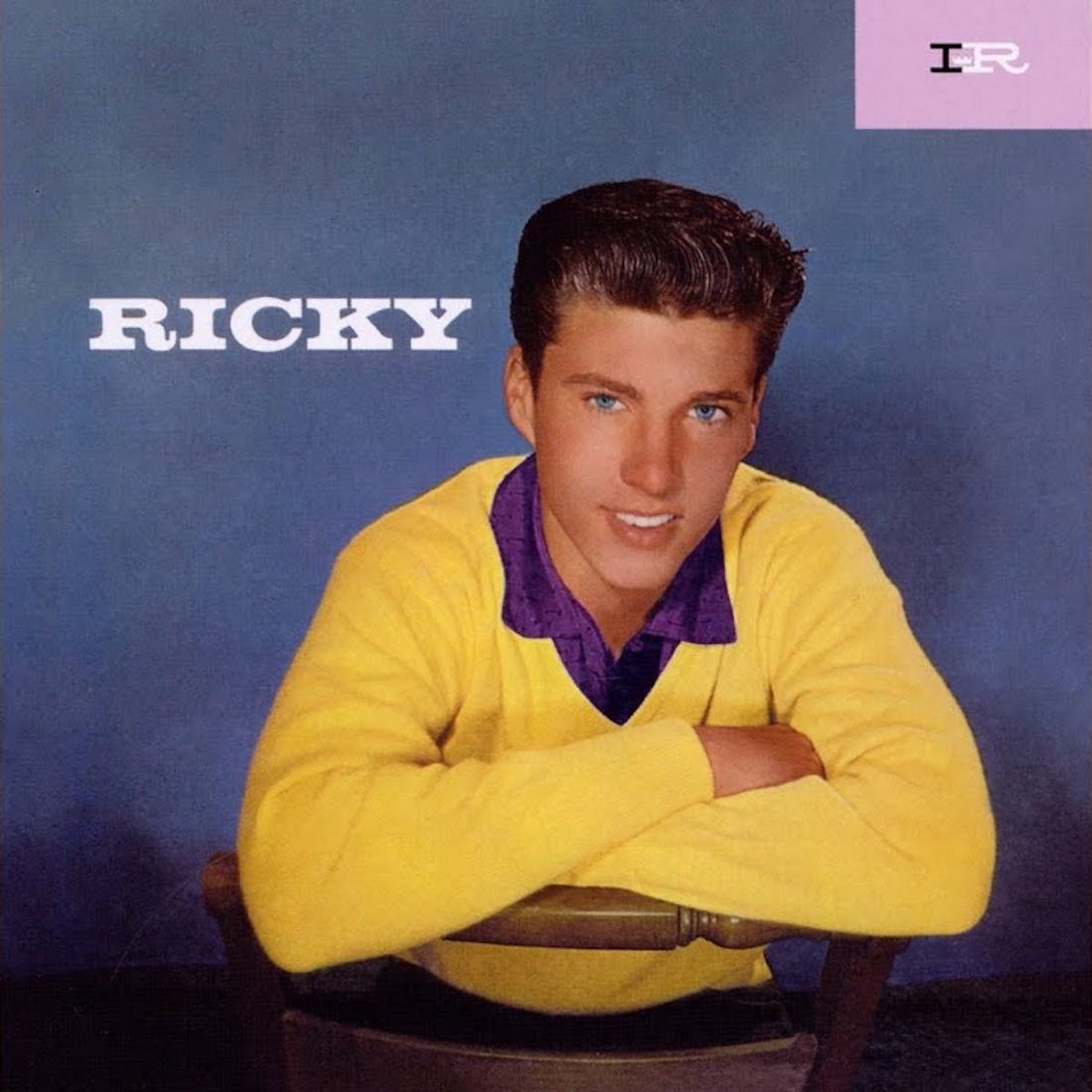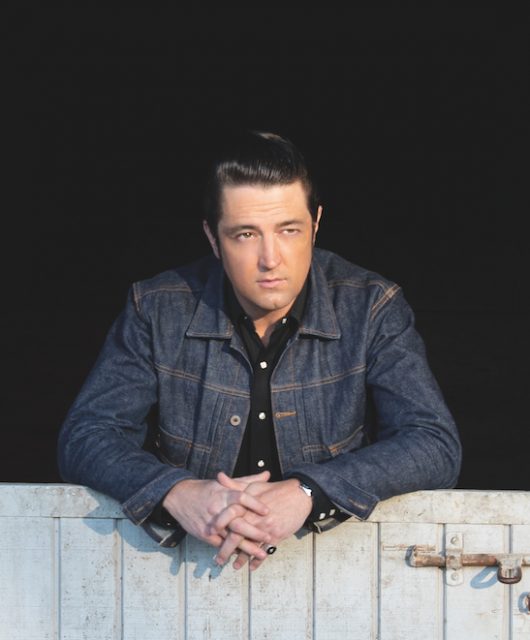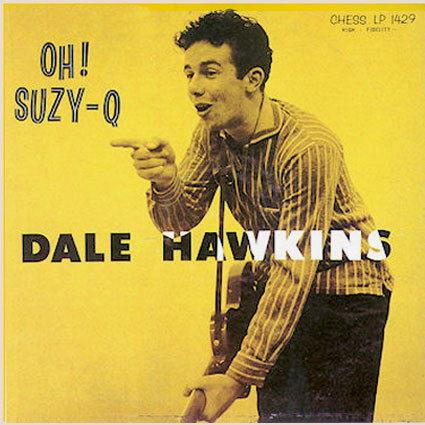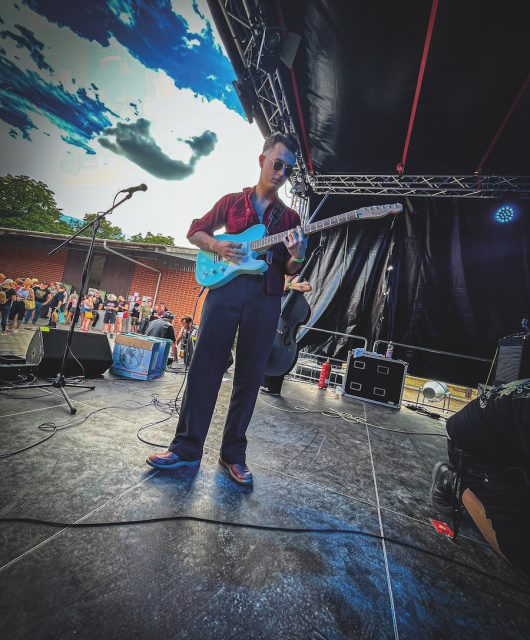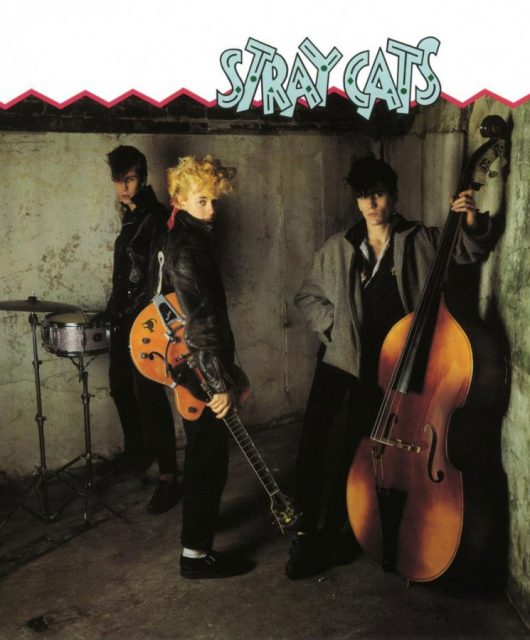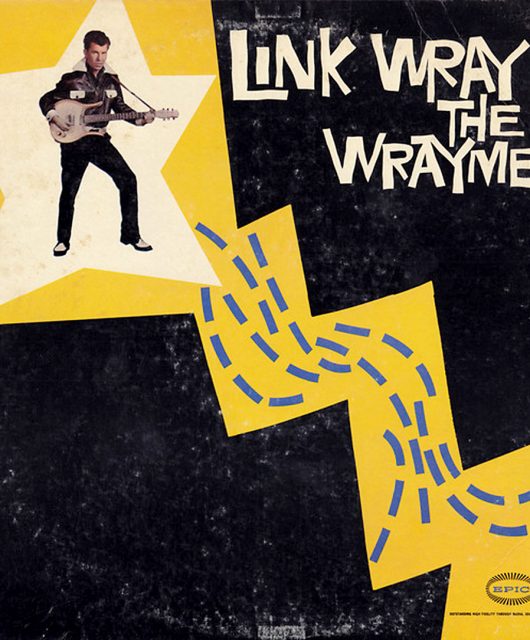One of the first to make the leap from the small screen to rock’n’roll stardom, we profile Ricky Nelson, the definitive teenage icon with help from his son Gunnar Nelson.
Words by Randy Fox
From the day of his birth, Ricky Nelson lived in the world of showbusiness. The second child of Ozzie and Harriet Nelson, Eric Hilliard “Ricky” Nelson was born on 8 May 1940. His father had led a dance band since 1930, and by the time of Ricky’s birth, Ozzie and Harriet were a well-established singing duo and popular radio personalities. With two young sons, the couple began focusing primarily on radio work, launching The Adventures Of Ozzie And Harriet on the CBS radio network in October 1944.
The weekly situation comedy was based on the Nelson family home life, with actors initially portraying their young sons David and Ricky. In February 1949, the real-life David (aged 12) and eight-year-old Ricky both joined the show, replacing the actors. Making the jump to television in 1952, the Nelson brothers spent the next 14 years growing up in front of cameras.
Rebellious Spirit
On television, Ricky was portrayed as the “Irrepressible Ricky,” the outgoing younger brother who was always ready with a wisecrack. In real life, Nelson was far more introverted and by the age of 15 was a die-hard country music fan, particularly favouring the flashy, up-tempo West Coast style popularised by the Los Angeles-based TV show Town Hall Party.
“He always had a rebellious spirit,” Ricky’s son, Gunnar Nelson, says. “My dad was the spearhead of the family show. He got all the laughs, but that meant he had a lot of pressure on him. When he discovered rock’n’roll, it was the one thing in his life that belonged to him. It had nothing to do with his family and nothing to do with the TV show. This was his private world. He could get lost in rock’n’roll and get carried away in the music like millions of other teenagers. He was attending Hollywood High at the time, but when he wasn’t working on the TV show or in class, he would hang out at Wallichs Music City, a record store on the corner of Sunset and Vine.”
Mad About The Girl
Starting in 1956, rock’n’roll became Ricky’s main obsession, in particular the rockabilly sound of his hero Carl Perkins. Although Nelson played drums and knew a few guitar chords, he never seriously considered a career in music until a girl he was dating provoked a fit of pique. “[The girl] was swooning over an Elvis song on the radio,” Gunnar says. “He quipped he was going to make a record and she laughed. It was that moment he decided he was going to do it and show that girl. Ozzie was always looking for material for the show and Ricky making a record seemed like a great idea, but nobody would give him a record deal. Everybody in the record business thought if you could see him singing for free on TV, why would they buy a record? Ozzie thought they were wrong.”
After rejections from 20 record companies, the jazz label Verve offered a one-year contract. Ricky’s first recording session was held on 26 March 1957 at Master Recorders studio in Hollywood. Famed jazz guitarist Barney Kessel – an old friend of Ozzie Nelson – led a band of studio musicians as they cut two doo-wop flavoured ballads and their own sprightly version of the Fats Domino hit, I’m Walkin’. By the time of the session, Ozzie had already shot Ricky’s television singing debut. The episode Ricky The Drummer aired two weeks after the recording session, and focused on the youngster’s desire to sit in on the drums with the Tommy Jackson Band at a local dance. In the course of the story, Ricky also takes the vocals on a version of I’m Walkin’.
Imperial Period
Ricky’s debut proved to be an enormous hit with the teenage audience and requests for the record poured in. Verve rushed the single out on 27 April, and it entered the chart on 13 May, with I’m Walkin’ eventually rising to No.4 on the Billboard Hot 100 and the flipside, A Teenager’s Romance, hitting No.2.
After the success of the first single, Verve were eager to hold another session, but had neglected to finalise their contract with Nelson. When Imperial Records approached him with a better offer, Ricky and his father abandoned Verve and sealed the deal with Imperial.
In the meantime, despite the objections of some adults to the appearance of rock’n’roll in their favourite TV show, teenagers loved Ricky’s new career. Musical sequences were added to two more episodes of the programme in May 1957 and both elicited a deluge of positive fan mail. Although rock’n’roll was still unpopular with many adults, Ricky’s clean-cut appearance and his position as a beloved character on a popular TV show made the music palatable to many parents in a way that Elvis Presley or other “greasier” rock stars could never achieve.
Never one to turn down a lucrative opportunity, Ozzie began working on new scripts incorporating Ricky’s performances as a regular part of the show, along with fully embracing his son’s love for rock’n’roll. “I think Ozzie was open to [rock’n’roll] because he led a dance band in the 30s and 40s,” Gunnar reflects. “He understood the culture of young people and their music.”
Teenage Kicks
In August 1957, Ricky cut two new rockers – Be-Bop Baby and If You Can’t Rock Me – along with the ballad, Have I Told You Lately That I Love You? recorded by Elvis just a handful of months earlier for his Loving You album. For the single, Imperial followed the rocker/ballad match-up template by choosing to release Be-Bop Baby paired with Have I Told You Lately That I Love You?, hitting the nation’s record racks in mid-September.
During late September and early October, Nelson returned to Master Recorders, completing three more sessions, which yielded enough material for his first album.
On 2 October 1957, the first episode of the sixth season of The Adventures Of Ozzie And Harriet aired, featuring Ricky performing Have I Told You Lately That I Love You?. He strapped on his guitar again for Be-Bop Baby in the following week’s show. The audience response was overwhelming as teenagers rushed to buy the single, pushing it to the No.5 on the chart for the rocker side, and No.29 for the ballad. In addition, Nelson’s first album, the simply-titled Ricky, was released in early November, shooting to No.1 on the US chart.
Even though his touring opportunities were limited due to the demands of the weekly TV show, Nelson knew that he needed a regular band, and in particular one with the rockabilly sound he desired.
Smart Sound
On 8 October 1957, he stopped by Imperial Records and happened to hear labelmate Bob Luman rehearsing with his band for an afternoon session at Master Recorders.
A native of Texas, Luman began his career on the Shreveport, Louisiana, radio programme the Louisiana Hayride, where he formed a band with guitarist James Burton, bass player James Kirkland and drummer Butch White. Even though Burton was just 17 years old at the time, he was already a well-known and respected guitarist, first making a name for himself playing with rockabilly Dale Hawkins – creating the memorable guitar riff for his 1957 hit Susie Q.
After signing with Imperial in the summer of 1957, Luman and his band spent several months on the West Coast – touring, recording and appearing in the low-budget rock’n’roll film, Carnival Rock. As Burton recalled in a 2015 interview, Luman’s band had just the sound that Nelson was looking for.
“We were rehearsing at [Imperial Records head] Lew Chudd’s office and Ricky Nelson came in and listened to us and stayed for about two or three hours,” Burton said.
“He really enjoyed it. The next day [James Kirkland] and I got a telegram asking us to come to General Service Studios, where they were filming the Ozzie and Harriet show. We played a little bit for Ozzie, and he said, ‘Oh man, let’s do some TV stuff’. That’s when it started.”
Prime Time
Nelson had not only found a guitarist and bass player for studio work and live appearances, he’d also discovered co-stars for his TV musical numbers, as well as close friends. Burton and then Kirkland both signed exclusive contracts, and with the addition of studio drummer Richie Frost and pianist Gene Garff, the line-up was secured for the next two years.
Burton and Kirkland made their TV debut on the 18 December 1957 episode of The Adventures Of Ozzie And Harriet.
The contrast with Nelson’s earlier musical numbers was immediately apparent, with Burton’s fun-loving and energetic guitar playing the perfect counterpoint to Nelson’s cool and reserved vocal delivery.
Ricky’s good looks and vulnerable aura of troubled shyness were irresistible to teenage girls, but even jealous teen boys had to admit that Nelson’s band cooked. For young, aspiring guitarists, Burton’s playing was reason enough to tune in.
Hardcore Rock
Over the next five years, Nelson racked up an impressive run of rock’n’roll hits. Hardcore rockers such as Baker Knight’s Mighty Good and I Got A Feeling, along with a string of classic compositions from Memphis rockabillies Dorsey and Johnny Burnette – It’s Late, Waitin’ In School and others – stood in sharp contrast to the milksop meanderings of the teen idols that Nelson shared the charts with.
Nelson was also not afraid to display his love for country, with such recordings as a rockabilly-fied version of Hank Williams’ My Bucket’s Got A Hole In It. Even his ballads – such as the 1959 masterwork Lonesome Town – displayed greater gravitas than the standard teeny bopper weeper as he connected to a universal bottomless reserve of teenage melancholy and angst.
In 1962, now billing himself as “Rick” Nelson, he signed a 20-year contract with Decca Records, but as the decade unfolded, the hits began to slow and he felt pressure to move away from his beloved rock’n’roll sound. As a wave of changes swept through the rock field, Nelson’s clean-cut image and catalogue of meat-and-potatoes rockers and basic ballads seemed passé.
Teen Age Idol
By the mid-60s, he seemed like a relic from a bygone era and the newly-born rock press scoffed at each new release, writing him off as a has-been teen idol whose career had been manufactured by the Hollywood machine. The Adventures Of Ozzie And Harriet ended its 14-year run on television in 1966, and by 1969 it had been four years since Nelson’s last chart hit.
“He had been living in a TV show for 14 years that itself was no longer relevant to the times, and he had to find his feet in this new world,” Gunnar explains. “He was basically written off by everybody. A lot of his contemporaries had relegated themselves to the oldies circuit and were out there playing county fairs. He had to make a concrete decision to do the same or challenge himself to swing for the fences.”
In 1969, Nelson embraced a new, country-rock sound that eventually returned to the charts in 1972 with the Top 10 hit Garden Party. Despite personal problems and a string of troubled relationships, he continued following that path until his death in a plane crash on 31 December 1985 at the age of just 45.
Man Of Many Talents
TV star, all-American boy, teen heartthrob, rockabilly torch bearer, film actor, songwriter, musical innovator – Ricky Nelson played many roles, some of them obscuring his true talents and legacy. “One of the biggest disservices of rock critics was to try to put Ricky Nelson in the same category as Fabian and Frankie Avalon,” Gunnar says.
“As John Fogerty said when he inducted my father into the Rock & Roll Hall of Fame, ‘Admitting Ricky Nelson had talent was kind of like admitting that the prom queen had a brain’. In a lot of ways, I think my dad would have been a lot happier if his music career hadn’t taken off like it did. It took his private love affair with rock’n’roll and country music away from him and into the public’s hands, where the monster had to be fed.”
Listen to Ricky Nelson here
Read More: Ricky Nelson and the rise of the teen idol

